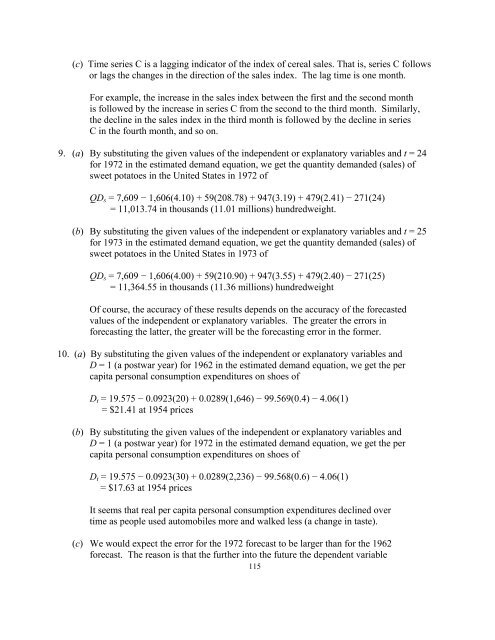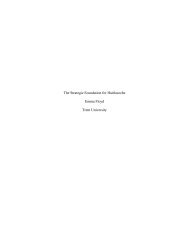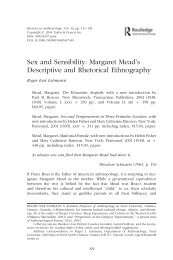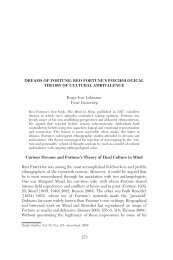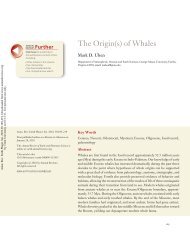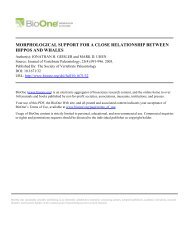Suggested Solutions to Assignment 4 (Optional) - Trent University
Suggested Solutions to Assignment 4 (Optional) - Trent University
Suggested Solutions to Assignment 4 (Optional) - Trent University
You also want an ePaper? Increase the reach of your titles
YUMPU automatically turns print PDFs into web optimized ePapers that Google loves.
(c) Time series C is a lagging indica<strong>to</strong>r of the index of cereal sales. That is, series C follows<br />
or lags the changes in the direction of the sales index. The lag time is one month.<br />
For example, the increase in the sales index between the first and the second month<br />
is followed by the increase in series C from the second <strong>to</strong> the third month. Similarly,<br />
the decline in the sales index in the third month is followed by the decline in series<br />
C in the fourth month, and so on.<br />
9. (a) By substituting the given values of the independent or explana<strong>to</strong>ry variables and t = 24<br />
for 1972 in the estimated demand equation, we get the quantity demanded (sales) of<br />
sweet pota<strong>to</strong>es in the United States in 1972 of<br />
QD s = 7,609 − 1,606(4.10) + 59(208.78) + 947(3.19) + 479(2.41) − 271(24)<br />
= 11,013.74 in thousands (11.01 millions) hundredweight.<br />
(b) By substituting the given values of the independent or explana<strong>to</strong>ry variables and t = 25<br />
for 1973 in the estimated demand equation, we get the quantity demanded (sales) of<br />
sweet pota<strong>to</strong>es in the United States in 1973 of<br />
QD s = 7,609 − 1,606(4.00) + 59(210.90) + 947(3.55) + 479(2.40) − 271(25)<br />
= 11,364.55 in thousands (11.36 millions) hundredweight<br />
Of course, the accuracy of these results depends on the accuracy of the forecasted<br />
values of the independent or explana<strong>to</strong>ry variables. The greater the errors in<br />
forecasting the latter, the greater will be the forecasting error in the former.<br />
10. (a) By substituting the given values of the independent or explana<strong>to</strong>ry variables and<br />
D = 1 (a postwar year) for 1962 in the estimated demand equation, we get the per<br />
capita personal consumption expenditures on shoes of<br />
D t = 19.575 − 0.0923(20) + 0.0289(1,646) − 99.569(0.4) − 4.06(1)<br />
= $21.41 at 1954 prices<br />
(b) By substituting the given values of the independent or explana<strong>to</strong>ry variables and<br />
D = 1 (a postwar year) for 1972 in the estimated demand equation, we get the per<br />
capita personal consumption expenditures on shoes of<br />
D t = 19.575 − 0.0923(30) + 0.0289(2,236) − 99.568(0.6) − 4.06(1)<br />
= $17.63 at 1954 prices<br />
It seems that real per capita personal consumption expenditures declined over<br />
time as people used au<strong>to</strong>mobiles more and walked less (a change in taste).<br />
(c) We would expect the error for the 1972 forecast <strong>to</strong> be larger than for the 1962<br />
forecast. The reason is that the further in<strong>to</strong> the future the dependent variable<br />
115


